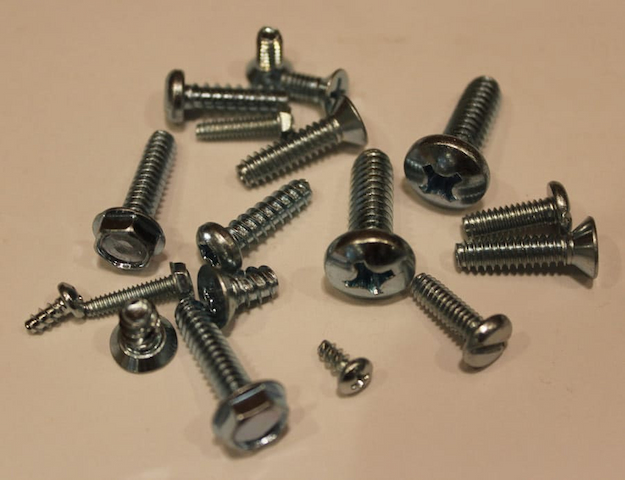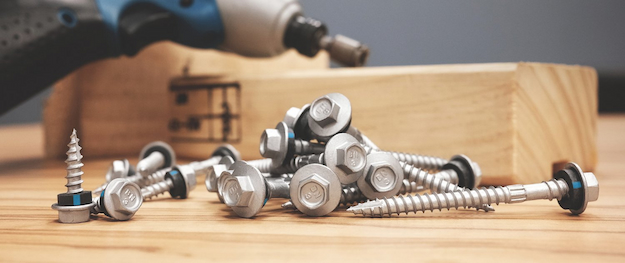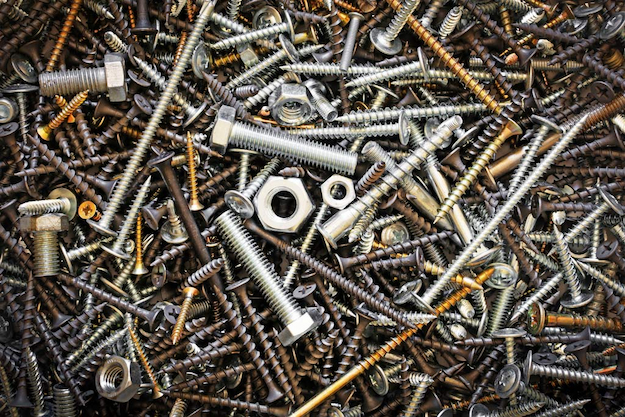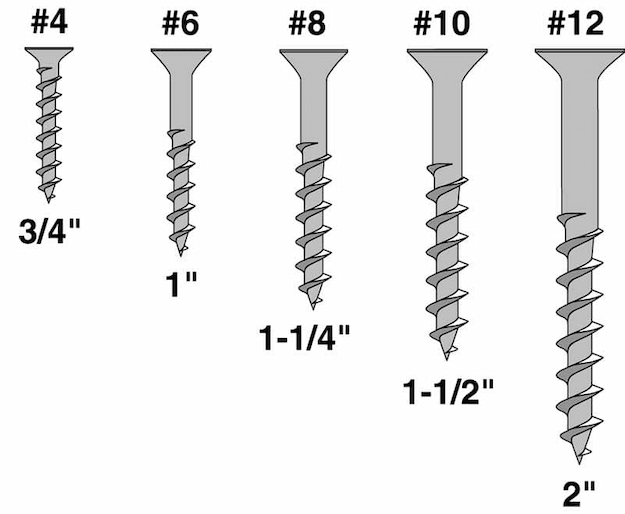Quick installation, superior holding strength, and excellent durability are just a few reasons why self-tapping screws are the fasteners tradies can’t do without. They differ from ordinary screws in that they tap their own hole during installation, cutting down on the time, effort and tools needed to get the job done. And they come in a few variations, to make everyday and specialist tasks a breeze.
What Exactly Is a Self-Tapping Scew?
A self-tapping screw is a fastener that creates its thread as it is driven into the material. They don’t require pre-drilled holes like other screws. The unique point and thread design allows them to cut and then thread their way when torque is applied to the head with the appropriate screwdriver or drill.
This makes them the ideal fasteners where pre-drilling holes are impractical, such as metals and hard plastics. They’re mostly found in applications where there’s a frequent need to disassemble and reassemble products, with the screws quickly relocating themselves into the same thread from which they were removed.
Like other fasteners, self-tapping screws come in a range of diameters and lengths, varying head designs for use with different tools, a range of materials and finishes and two major types – thread-forming and thread-tapping screws – with distinct design differences.
Thread-forming screws
These miss out on pointed tips but have finer threading, creating a thread into the base material during insertion. The thread eliminates the need for nuts or a tapping operation, reducing installation times. The design is also chosen for its holding strength and the ability to resist unloosening, especially in plastics.
Thread-tapping screws
Thread-tapping screws don’t need a pilot hole, but existing holes do make installation faster. They remove some of the material when installed, usually with a coarser thread pitch. The fastener is especially useful in assembly and disassembly, and when there’s access only on one side. They’re commonly used with wood and metal.
Common Uses
A key advantage of self-tapping screws is that they don’t require pre-tapping or pre-drilled threads for insertion. This saves time and the need to change drill bits. The fasteners are commonly used in plastics including fibreglass and polycarbonate, soft and hardwoods, and thinner metal parts made from iron, steel, aluminium, copper and copper alloys.
High holding strength, good durability and the fact that they don’t require a nut to fasten objects together make them versatile across hundreds of varied applications. Typical uses are in wooden furniture, attaching metal pieces to wood, securing and assembly of plastic components, assembly of automotive parts and more.
Self-tapping vs. Self-drilling Screws – What’s the Difference?
Though similar in appearance, self-tapping and self-drilling screws have one major difference. Self-drilling types also include a drill point and cutting flute (with varying profiles), effectively drilling the screws into the base material without a pre-drilled or tapped pilot hole. This allows quicker installation and more versatility. The screws can also tap holes, and create threads when tightened, just like self-tapping screws.
To clear any confusion, all self-drilling screws are also self-tapping, but not all self-tappers are self-drillers. While the two terms are used interchangeably, the slight but important differences also mean they’re used for different purposes.
The design variation in self-drillers is useful when cutting through thinner materials such as sheet metal. Metal roofing, HVAC systems and ductwork, and assembling steel frames are common uses. The screws can also be used with a variety of wood types in woodworking, as well as in general repairs and construction, and with plastic sheets and tubing in ductwork and piping. For thicker materials, self-drilling screws may also include integrated tip ‘wings’ to easier drill into the material, allowing simplified access for the thread.
Choosing Fasteners by Head Types
Both self-tapping and self-drilling screws come in different head designs. This determines the overall finish in the conjoined parts or products, the holding and clamping force, the tools with which the fasteners are used and the torque required in tightening. Common head types are:
- Countersunk head – these provide a flush finish with the head sitting below the surrounding material.
- Button/pan/dome heads – screws in this design are generally found in woodworking and carpentry. The rounded head prevents countersinking and allows for easier removal.
- Hex and Socket heads – self-tapping and self-drilling screws with hex heads are often used in heavy-duty applications where high clamping force and torque are required. Similar are Allen head fasteners, installed with an Allen key.
- Truss head – the wide and rounded head in truss screws are suitable for holes in larger diameters, specifically in sheet metals.
- Flange heads – use these when attaching metal to metal or plastic to plastic. The flanged head exerts more camping force than other designs.
Other head designs are bugle head screws used to attach plasterboard to wood or metal frames; pancake heads for larger clamping areas and better force distribution, and square heads for easier and quicker installation with compatible drills. etc.
Materials and Finishes
Fastener materials ensure the appropriate strength, the ability to resist external factors, and to a large extent, aesthetics. Stainless steel is the most common material used in self-tapping types as it is tough, durable and resistant to heat and corrosion. The material can also be treated. Go with zinc-plated screws used in indoor applications, hot-dip galvanised fasteners for heavy-duty use outdoors, and clear-passivated screws when looks are important.
Self-drilling screws consist mostly of a stainless steel head and shaft for corrosion and heat resistance, but the drill tip usually is made of hardened steel to pierce into the base material easily.
Sizing Screws for Your Application
Self-tapping and self-drilling screws are sold in numbered ‘screw sizes’, ranging from #0 to #14. This denotes the nominal thread diameter along the shaft and the major or largest diameter of the threading. Screws can be between 1.52mm or 1/16″ (#0) to 6.35mm or 1/4″ (#14) with several sizes in between.
Besides diameters, also consider lengths. This can be between 6 and 200mm or 1/4″ to 8″. Lastly, there are differences in the threading pitch, from fine, normal or coarse threading used in different materials and with various holding strengths. This is stated in threads per inch or TPI. Size screws according to material thickness and hole requirements.







